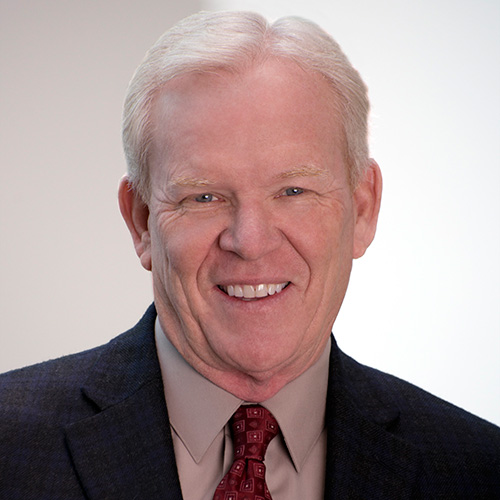Masters: Tech Leaders Bring New Insights to R&D
Ophthalmology remains one of the likeliest targets for technology companies looking to make an impact – and to build a business – within health care. But how will these new players impact traditional research and development?
Industry leaders answered that question during the “Masters of the Industry” panel at this year’s OIS@AAO in Chicago.
The interest in ophthalmology is high. Bill Muery, chief commercial officer of Allergan, says the two principal goals in health care are improving outcomes and controlling costs. “This space is a target-rich environment for Apple or Google, or anyone who wants to make an investment in health care,” he said.
Ludwin Monz, president and CEO of Carl Zeiss Meditec, says technology companies bring more than novel approaches to new product development.
Tech companies enjoy closer connections to their customers and, in turn, are arming those customers – or patients – with valuable information that is creating a “consciousness of health awareness.” This rise of data is increasing the demand for health care products.
Monz said Zeiss conducted a study that showed “the information of diseases and treatment options is one of the major growth factors” in health care. “I believe what we see coming from the consumer end will have a big impact on health care,” he added.
Flemming Ornskov, MD, CEO of Shire, says the connection between technology companies and consumers is similar to the relationship Shire has with patients suffering from the rare diseases that the company serves.
In rare diseases, Dr. Ornskov said there is “incredible intimacy between patients and providers. I ask my team, why can’t we bring some of that to the ophthalmic area and not look at people as populations, groups or subgroups? But rather look at each patient as a unique individual,” he continued.
“A lot of the solutions the tech companies are bringing are customization and individualization,” he said.
Dr. Ornskov also noted tech companies like Amazon, Google, and Apple truly disrupted their industry. Pharma and medtech companies need to approach health care similarly, by adopting new approaches to R&D and organization. As an example, he disclosed that he invites Shire employees who feel innovation is being stifled by the organization to contact him directly. “They have free access, 24/7” to bypass any committee, he said.
“If we don’t turn disruptive ourselves someone is going to disrupt us,” he pointed out.
Ashley McEvoy, company group chairman of Johnson & Johnson Vision Care, says building an effective R&D program begins with finding the right leaders to identify opportunities inside and outside the company.
McEvoy says internal development is benefiting from a “new generation of R&D leader that is really better at technology scale … I think we’re moving more and more into less conventional outside-in and inside-in partnership. I think we’re much more co-dependent.”
Bill Link, managing director of Versant Ventures and OIS co-chair, says health care traditionally has coopted technology developed for other purposes. “Whether it’s a laser, drug delivery, or plastic we try to figure out what the problem is,” he explained. “And [we] say, what are the choices – the way we have been tacking it is not working well – and ask if there is a better way, and almost always the better way comes from outside of health care.”
Mike Ball, CEO of Alcon, which formed a very public partnership with Google to create a contact lens capable of doing far more than correcting vision, says the tech company’s capabilities in areas such as miniaturization can help identify new solutions to long-standing problems.
“I do think companies outside the industry working with companies inside the industry can produce real magic,” Ball said.
He noted, however, that Alcon’s recently released NGENUITY 3D Visualization System was developed by a company with ophthalmology. The system was produced in partnership with TrueVision 3D Surgical, a California-based start-up.
Ball says he feels an obligation to continue to hear pitches from start-ups in health care. “It is critical to the industry that there is a vibrant group of people outside the companies doing those types of things and they can count on some of the big companies to bring those technologies in-house,” he said.
Contributed By Tom Salemi
Presentation Slides:
Participants:
Jim Mazzo
James V. Mazzo is Global President for Carl Zeiss Meditec’s Strategic Business Unit Ophthalmic Devices, which includes Ophthalmic Diagnostics, Surgical Ophthalmology and Refractive Lasers.

Flemming Ornskov, MD
Dr. Flemming Ornskov was appointed Chief Executive Officer Designate and a member of Shire’s Board of Director’s on January 2, 2013.
Mike Ball
Mr. Ball was CEO of Hospira from 2011-2015. At Hospira, a world leader in injectable pharmaceuticals and infusion devices, he successfully turned the company around and grew it by focusing on product and quality improvements, and expanding its global footprint.
<div

Ashley McEvoy
Ashley McEvoy is Company Group Chairman for Johnson & Johnson Vision Care and Diabetes Care Companies, two medically directed, consumer-informed businesses within the company’s global medical device segment.

William J. Link, PhD
Prior to Versant, Bill was a general partner at Brentwood Venture Capital. He founded, and served as chairman and CEO of Chiron Vision.
Ludwin Monz, PhD
Dr. Ludwin Monz has been President and CEO of Carl Zeiss Meditec AG since 2010 and was appointed a member of the Executive Board of the ZEISS group in 2014.
William Meury
Previously, Mr. Meury served as President, Branded Pharma since March 2015. He joined Actavis in July 2014 as Executive Vice President, Commercial, North American Brands.
